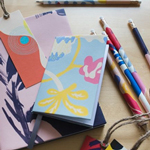
How to paint over wallpaper is a question many homeowners ask when seeking to refresh a space without removing the existing wallpaper. It might be an attractive option if the current material is still in good shape or removal seems too challenging. In this article, we will explore the preliminary considerations, discuss the preparation needed, detail the tools and processes required, and identify common mistakes to avoid when painting over wallpaper.
Preliminary considerations: Can I paint over wallpaper?
Before diving into the actual process of painting over wallpaper, it's essential to evaluate whether this is the right option for your particular situation. To do this, you must consider the wallpaper in question. While some wallpaper types are more suitable for painting over, others may pose challenges. Here are some considerations:
Wallpaper types you can easily paint over

• Smooth wallpaper: Smooth and flat wallpapers with a non-textured surface are generally easier to paint over. These types of wallpapers provide a good base for paint adhesion and allow for a smooth finish.
• Wallpaper with a sealed surface: If the wallpaper has been sealed with a primer or clear coat, it can be suitable for painting over. The sealed surface helps improve paint adhesion and prevents the wallpaper pattern from showing through.
Wallpaper types that may be difficult to paint over
• Textured wallpaper: Wallpaper with heavy textures, such as embossed or raised patterns, can be challenging to paint. The texture may affect the smoothness of the painted finish and make it difficult to achieve an even look.
• Unstable or loose wallpaper: If the wallpaper is peeling, bubbling, or in poor condition, painting over it may not yield desirable results. It's crucial to address any loose or damaged wallpaper issues before considering painting. If you’re dealing with bubbling, peeling, foreign objects beneath wallpaper—this guide discusses how to address them effectively: How to fix wallpaper seams
Photowall offers smooth and flat, non-woven, and peel-and-stick wallpaper. Non-woven wallpapers have smooth and durable surfaces. Their structure allows for easier paint adhesion, resulting in a smooth finish.
Their peel-and-stick wallpapers also have a smooth satin finish, allowing you to paint over them. Nevertheless, most homeowners and decorators don't worry about painting over them since they are the easiest wallpaper type to remove. So, in case you’re having second thoughts about painting over your wallpaper, you can resort to removing them— and the most complete guide on how to remove wallpaper is here: How to remove wallpaper
Preparation guidelines for painting over wallpaper
If your wallpaper’s condition allows you to paint over it, it’s time to prepare the space and observe some precautionary measures. It sets the stage for a smooth painting process, ensures personal safety, protects the surrounding area, and helps to create a conducive working environment, paving the way for an efficient painting project.
• Clear the room: Remove furniture, decorations, and other items to avoid obstructions.
• Protect floors and fixtures: Cover floors with drop cloths and tape off areas that won't be painted to prevent accidents.
• Ensure adequate ventilation: Open windows and doors to minimize fumes during painting.
• Wear proper safety gear: You may use safety gloves and eyewear to protect against potential paint splashes or contact with cleaning solutions.
How to hide wallpaper seams before painting: Tools and process
Hiding wallpaper seams is essential in achieving a professional finish when painting over wallpaper. Smooth and hidden seams prevent unsightly lines and uneven textures, creating a uniform surface that's ready for paint. Here's how to do it:
Necessary Tools
• Damp cloth
• Seam adhesive
• Utility knife
• Seam roller
• Spackling compound or joint compound
• Fine grit sandpaper
• Primer
The step-by-step process
1. Clean the surface: Ensure the wallpapered walls are clean and free from dust or debris. Use a damp cloth to wipe the surface gently, allowing it to dry completely before proceeding. A more complete guide on how to clean wallpaper is available here: How to clean wallpaper
2. Inspect and repair seams: Begin by checking for loose or visible seams and adhere them back with seam adhesive.
3. Trim excess wallpaper: Utilize a utility knife to trim any excess or overlapping wallpaper carefully.
4. Roll the seams: Flatten seams with a seam roller to create a uniform surface.
5. Fill seams: Apply spackling or joint compound over the seams and allow it to dry.
6. Sand seams: Sand down the filled seams using fine-grit sandpaper to create a perfectly smooth surface.
7. Prime the surface: Apply a suitable primer over the seams to prepare the surface for painting.
If you need a more comprehensive guide on how to fix wallpaper seams, everything you need to know is here: How to fix wallpaper seams
How to paint over wallpaper: Tools and process

Once you’re done with hiding wallpaper seams, or if your wallpaper doesn’t have one, you may proceed with the process of painting over the wallpaper. Here's a comprehensive guide including the tools needed for all stages and the step-by-step process for each part:
Necessary Tools
• Mild detergent or soap
• Sponge or cloth
• Spackle or joint compound
• Putty knife
• Primer
• Paint roller or brush
• Paint
• Large bucket
• Small brush
• Paint roller
The step-by-step process
It's essential to follow a systematic approach to painting over wallpaper. This section will discuss each stage comprehensively, from cleaning to final touches.
Cleaning
Cleaning the wallpaper is the first step in the process, as it ensures that the surface is free from dirt, dust, and grime that might interfere with paint adherence.
1. Clean the surface: The first step is thoroughly cleaning the wallpapered walls. Use a mild detergent or soap with water and a sponge or cloth to gently wipe the surface. Ensure the wall is free from dust, grime, or grease that might interfere with paint adherence. More techniques on cleaning wallpaper can be checked here: How to clean wallpaper
2. Allow to dry: Let the surface dry completely before proceeding. Any lingering moisture can cause problems with the paint adhering properly.
Filling holes and cracks
Repairing holes and cracks is crucial, as any imperfections might show through the paint. When the painting surface is smooth and even, it contributes to a professional and appealing final result.
1. Fill with spackle or joint compound: Apply a small amount of spackle or joint compound to a putty knife. Fill the holes, cracks, or damaged sections with the compound, spreading it evenly over the damaged area. Smooth the compound with the putty knife.
2. Let the compound dry: Allow the spackle or joint compound to dry completely. Drying times may vary depending on the product used, so refer to the manufacturer's instructions for specific guidance.
Priming
Priming the wallpaper is essential in creating a surface that paint can adhere to effectively. It helps seal the wallpaper and provides a base for the paint, ensuring an even and lasting finish.
1. Choose the right primer: Select a primer suitable for your specific wallpaper type.
2. Apply primer: Use a paint roller or brush to apply a uniform coat of primer over the entire surface, paying close attention to seams and edges.
3. Allow the primer to dry: Let the primer dry according to the manufacturer's instructions. This creates a stable base for applying the paint.
Painting
Painting requires the application of proper technique to achieve a smooth, even finish that not only looks good but adheres well to the wallpaper. Here’s how:
1. Select the right paint: Select a paint suitable for the desired finish and the type of wallpaper. Choose your desired color and finish.
2. Mix the paint: If using more than one can of the same color, mix them together in a large bucket to ensure color consistency.
3. Cut in the edges: Using a smaller brush, carefully paint the edges and corners of the wall where a roller may not reach.
4. Roll the paint: Use a roller to apply paint to the larger surface areas. Start from one corner and work your way across the wall in sections, applying the paint evenly.
5. Apply additional coats as needed: Depending on the color and finish, you may need to apply multiple coats. Allow each coat to dry according to the instructions on the paint can before applying the next one.
6. Check for drips and runs: As you paint, look for any drips or runs and smooth them out immediately.
7. Keep a wet edge: To avoid visible lines, try to keep a wet edge by overlapping the edges of previously painted areas while they are still wet.
8. Allow to dry: Let the paint dry for the time specified on the paint can. Some paints may take longer to cure fully.
Final touches
The final touches in the painting process are all about refinement and completion, ensuring the newly painted surface looks pristine and professionally finished.
1. Inspect the walls: Once the paint is completely dry, carefully inspect the walls for any missed spots, uneven areas, or imperfections.
2. Touch up as needed: Use a small brush to apply additional paint to areas that may need a little extra attention. This could include spots where the paint is too thin or where there are visible blemishes.
3. Reposition furniture and decor: Carefully move furniture and decorations back into place once everything is clean and dry. Take this opportunity to refresh the room layout if desired.
What are the common mistakes in painting over wallpaper?

When painting over wallpaper, it's important to be aware of common errors that can occur. Here are some common mistakes to avoid:
• Insufficient preparation: Failing to properly prepare the wallpaper surface before painting can result in poor adhesion and an uneven finish. Skipping steps like cleaning or priming the wallpaper can lead to paint failure or visible imperfections.
• Lack of primer: Using a primer specifically designed for wallpaper is crucial for promoting paint adhesion and creating a smooth surface. Skipping this step can cause the paint to peel or bubble, especially if the wallpaper has a glossy or textured surface.
• Overloading the paint roller: Applying too much paint to the roller can result in drips, streaks, or an uneven application. Loading the roller with moderate paint and evenly distributing it on the surface is important.
• Rushing the process: Painting over wallpaper requires patience and attention to detail. Rushing the process can lead to missed spots, inadequate coverage, or uneven paint application. Take your time and ensure each area is properly covered before moving on.
• Ignoring repair needs: Painting over damaged areas without properly repairing them can result in visible flaws or compromised paint finish. Address any holes, cracks, or damaged sections on the wallpaper surface before painting to ensure a smooth and professional-looking result.
Painting over wallpaper can be a practical solution for updating a room without removing existing wallpaper completely. This comprehensive guide outlines everything from selecting suitable wallpaper types to step-by-step processes, preparation, tools, and common mistakes to avoid. Indeed, following this guide will help you achieve a professional finish and breathe new life into your space.




